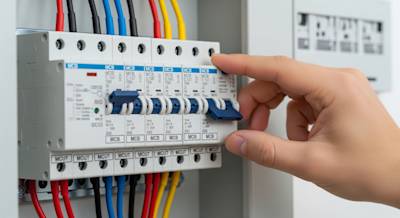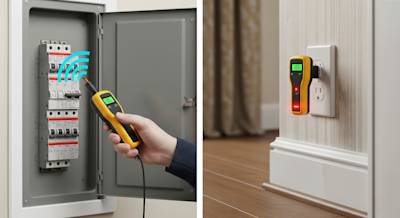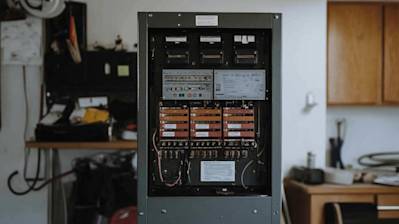In any electrical project, whether it is installing a light fixture or rewiring an entire house, the importance of wire nuts cannot be understated. These devices, also known as wire connectors or screw-on wire connectors, play a central role in establishing safe, dependable, and long-lasting electrical connections. Despite their simple design, wire nuts provide an unmatched level of utility and versatility, making them an indispensable element in any toolkit. In this article, we delve into the intricacies and practical aspects of wire nuts, helping you grasp their true value in any electrical endeavor.
Wire Nuts - Unraveling the Basics
Wire nuts are common electrical accessories designed to fasten two or more wires together securely. While they come in varying designs, shapes, and sizes, their primary function and mode of operation remain the same - establishing a secure connection between live wires. These connectors are usually color-coded, representing different sizes and wire gauge capacities. They are often made from durable plastic and come with a metal coil inside, which forms the electrical connection when screwed onto the ends of the wires.
The Functionality and Importance of Wire Nuts
A wire nut primarily serves two functions: secure wire connection and insulation. It is designed to not just firmly grip and hold the wires together but also to insulate this connection, preventing electrical accidents, shorts, or unintentional grounding. Without wire nuts, any electrical connection could pose a risk of electric shock or cause a fire due to sparks or short circuits. For this reason, they are a crucial safety feature in any electrical system.
Different Types of Wire Nuts
Contrary to common perception, there is no one-size-fits-all wire nut. These devices come in a range of designs and sizes to accommodate different wire types and combine various numbers of wires. Here are the most common types of wire nuts you might come across:
- Twist-on wire nuts: These are the most common types of wire nuts and are used in a wide variety of applications, from household electrics to industrial installations.
- Winged wire nuts: These feature small wings or handles on their sides, which provide extra grip when turning and tightening the connector.
- Spring insert wire nuts: These connectors have a coiled wire insert that grips the conductors as they are twisted together.
Choosing the Right Wire Nut
Choosing the right wire nut relies on understanding the color codes, which indicate the maximum capacity of wires that the connector can hold securely. For instance, yellow wire nuts are usually used for connecting two or three wires of 12 or 14 gauge, while red wire nuts are designed for three to five wires of the same gauge. The ultimate decision depends on the specific wires you are working with.
Using and Installing Wire Nuts
Installing a wire nut is fairly simple, even for a novice. Here's a step-by-step guide:
- Strip the insulation off the ends of the wires you want to connect.
- Hold the stripped sections side by side and twist them together clockwise.
- Put the wire nut over the twisted wires and twist it clockwise until it's snug.
- Your connection is then ready and safely insulated!
Safety Precautions and Tips
While wire nuts are easy to use, several safety precautions should be taken to ensure a safe and effective connection. Always remember to turn off the power before handling electrical wires. Furthermore, ensure you select the correct size of wire nut for the wires being connected. Additionally, always give the wire nut a pull after installation to make sure it's secure. It's worth noting that wire nuts are not designed for permanent use and should be replaced every ten years or so as part of regular maintenance.
By understanding what wire nuts are, the different types available, how to choose and install them, and the safety precautions to take, you are now equipped to make safe and reliable connections in your next electrical project.
Frequently Asked Questions about Wire Nuts
Are wire nuts reusable?
In principle, wire nuts can be reused, especially if they're undamaged and clean. However, it's advisable to replace them when they're worn out or if the spring inside has lost its tension. Reusing old, damaged wire nuts can lead to loose connections and potential electrical hazards.
Can wire nuts cause a fire?
When used correctly, wire nuts pose no fire risk. However, a poorly secured wire nut or one that's the wrong size could lead to a loose connection, which could potentially overheat and cause a fire. Always ensure you're using them correctly and that they're fully tightened to prevent any issues.
Do wire nuts have a maximum voltage?
Yes, wire nuts typically have a voltage rating, which is often displayed on the packaging. Most wire nuts are suitable for voltages up to 600 volts for building wiring and up to 1000 volts for fixtures and signs. But you should always check this rating before use.
Can wire nuts be used outside?
Standard wire nuts aren't designed for outdoor use as they're not weatherproof. However, there are specific wire nuts for outdoor applications, which are usually filled with a waterproof sealant to protect the connected wires from moisture.
Can I use electrical tape instead of a wire nut?
While it's possible to use electrical tape instead of a wire nut, it isn't advisable. Wire nuts provide a firm, secure connection between wires and help prevent electrical shorts. Electrical tape, on the other hand, may become loose over time, exposing wire ends and increasing the risk of an electrical short or electrical shock.
Is it necessary to twist wires before applying wire nuts?
It's not absolutely necessary to twist wires before using wire nuts. However, some professionals recommend pre-twisting wires, especially when dealing with stranded wires or larger wire bundles, to ensure a more secure connection.
How tight should wire nuts be?
Wire nuts should be tightened enough to firmly hold wires together without damaging the metal conductors inside. You should be able to tug on the wires without them slipping out. Over-tightening, however, can damage the wire and reduce connection quality.
How can I tell if my wire nuts are properly installed?
To test if your wire nuts are properly installed, ensure that the nut is tightly fitted and that no copper wires are visible under the nut. You can also perform a pull test by carefully tugging on each wire to ensure they remain firmly in the wire nut. If a wire comes loose, the connection wasn't secure.
Pros and Cons of Wire Nuts
Pros of Wire Nuts
Easy to Install
- Wire nuts are easy to install even for beginners. They do not require any special tools, except a couple of pliers for stripping the wires. Once the wires are properly stripped, they can be twisted together and the wire nut twisted onto the end to hold them secure.
Low Cost
- Wire nuts are very cost-effective. This makes them a preferred choice for various minor electrical projects. Even for larger projects, the overall cost stays low because of the mass production of these tiny devices.
Varied Sizes and Colors
- Wire nuts come in a range of sizes and colors. This feature makes it easier to identify different types of connections in a complex wiring system. The color of the wire nut indicates the size and capability of the wire nut.
Secure Connections
- When installed correctly, wire nuts provide a secure and reliable connection that is also safe from shorting or other electrical issue. They do not easily come loose when vibrations or shocks occur.
Cons of Wire Nuts
Installation Mistakes
- Wire nuts, though easy to put on, can still be done incorrectly, resulting in weak or unstable connections. If the wires are not stripped or twisted together enough, or if the wrong size wire nut is used, it can lead to problems down the line.
Single-Use Design
- Wire nuts are typically designed for single-use. They are not ideal for applications where wires must be frequently connected and disconnected. In those uses, screw terminals or other types of connectors might be more suitable.
Varying Qualities
- Not all wire nuts are created equal, and some may not provide the same level of connection security as others. It's important to choose quality brands to avoid issues with the integrity of the electrical connection.
Variations of Wire Nuts
Standard Wire Nuts
- The standard wire nuts are used for connecting wires of similar types and sizes. They provide a secure connection and can accommodate several wires at once.
Winged Wire Nuts
- Winged wire nuts come with wings or tabs on their sides, which make it easier to twist them onto the stripped ends of the wires. These are particularly useful when working in tight spaces where manual dexterity may be limited.
Reversible Wire Nuts
- Reversible wire nuts are uniquely designed to be removable and reusable, making them ideal for situations where the wiring setup may need to be changed frequently.
Waterproof Wire Nuts
- Waterproof wire nuts are especially designed to withstand outdoor environments and damp conditions. The interior of these wire nuts often contains a gel that insulates the wire connections and prevents water intrusion.
Summary
So, it's pretty clear that the world of electrical wiring would be a significantly more challenging place without the help of wire nuts. They help to ensure safe and secure connections, preventing any potential hazards that could arise from poorly connected wires. Whether it's for a small DIY project or major electrical work, attention to the value and importance of wire nuts is undeniable.
If you ever find yourself dealing with exposed wires, remember to reach for the humble but mighty wire nuts. They offer a quick, secure solution that drastically reduces the risk of electrical faults. Plus, their easy installation and removal process makes your work more efficient. They're available in different colors and sizes to suit every unique wiring situation and provide a practical and steadfast solution.
However, despite their importance, wire nuts aren't a be-all-end-all solution. It's imperative to check their integrity frequently and replace them if they show signs of damage or wear. Doing so will help ensure the safety and longevity of your electrical connections. After all, using strong, reliable wire nuts means no sparks, no short circuiting, and a durable electricity supply that keeps everything running smoothly.
About Sagan Electric
Welcome to Sagan Electric; we are your trusted electrical services provider in Sacramento, CA. With our skilled team and years of experience, we excel in understanding and satisfying our customer's electrical needs promptly and professionally. We pride ourselves on our dedication to quality, our exceptional service, and our commitment to safety. Whether you require installation, repair, or maintenance, Sagan Electric is always at your service, keeping the light on in homes and businesses in and around Sacramento.
Tags: Electrical Wiring, DIY Projects, Electrical Safety,








